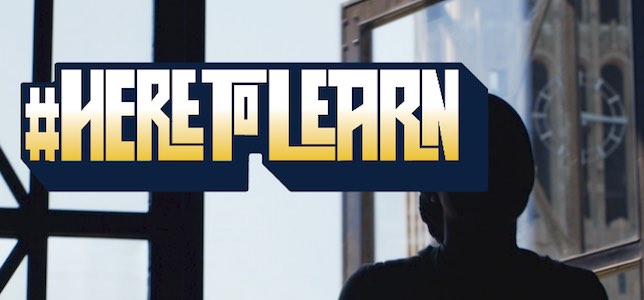
California State University Long Beach is turning to online crowdsourcing to help map out its future. Using a platform developed by game designer and researcher Jane McGonigal, "Imagine Beach 2030" invited participants to share their ideas and provide feedback on others' ideas during two days in November.

A joint study involving researchers from MIT, the University of Michigan and the Wikimedia Foundation has identified why so many Wikipedia disputes unresolved and developed predictive tools to help improve editorial deliberations.

As the deadline for voting in the mid-term elections approaches, people now have access to a new online tool to help monitor the prevalence of fake news on the big social media sites. The University of Michigan Center for Social Media Responsibility, housed in the School of Information, created Iffy Quotient as a "platform health metric" to track "iffy" news in real time.

Some of the University of Michigan's most innovative strategies for online learning are based on values held throughout its 200-plus year history. Here, U-M's associate vice provost for academic innovation explains why Michigan Online — a relatively recent initiative — brings communities of motivated learners together, both to learn together and to apply their knowledge to solving significant problems.

Microsoft gave the green light this week for organizations to deploy the Microsoft Teams app on Surface Hub devices.

A new report that examines how college presidents interact with students shares how the most innovative leaders have gone beyond the standard fare (photo opportunities and participation in service events) to embrace social and digital mechanisms. "Presidential Engagement of Students at Minority Serving Institutions" was produced by the Penn Center for Minority Serving Institutions, within the University of Pennsylvania Graduate School of Education.

Students at Brigham Young University have been getting the opportunity to work with real-world clients such as Pepsi, Subaru, the NBA and Marriott thanks to the school's student-run digital and social media agency, Y Digital. Described on its site as "a full-service, digital communications agency sponsored and housed by Brigham Young University," the organization's student-employees work with faculty members and industry professionals for each project.

A crowdsourcing tool helped create a safe place for sensitive discussions on diversity and inclusion at NYU.

While most admissions officers consider checking out the social media profiles of college applicants "fair game," few actually do so. In a recent set of surveys, Kaplan Test Prep queried 388 admissions leaders from top U.S. colleges and universities as well as 914 high school students who have attended a Kaplan course. Among the first group, 68 percent reported having no qualms about checking out student social media profiles on sites such as Facebook, Instagram and Twitter. Just 29 percent said they have actually done it.

Social media has evolved into a tool for creating and promoting the "self," creating a tension between encouraging individual expression and overemphasizing the self in a collaborative setting.